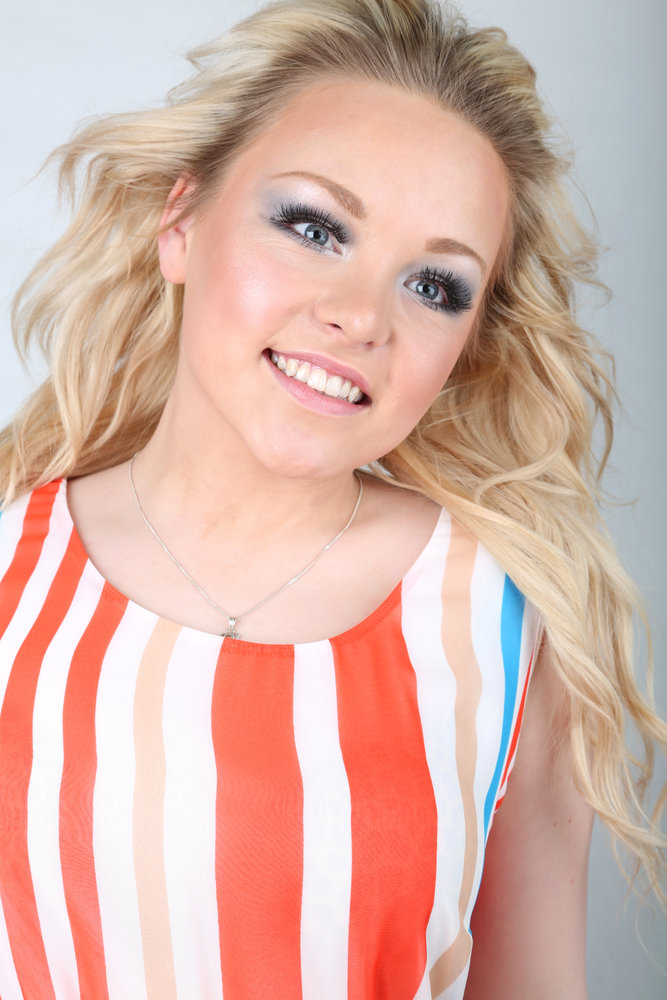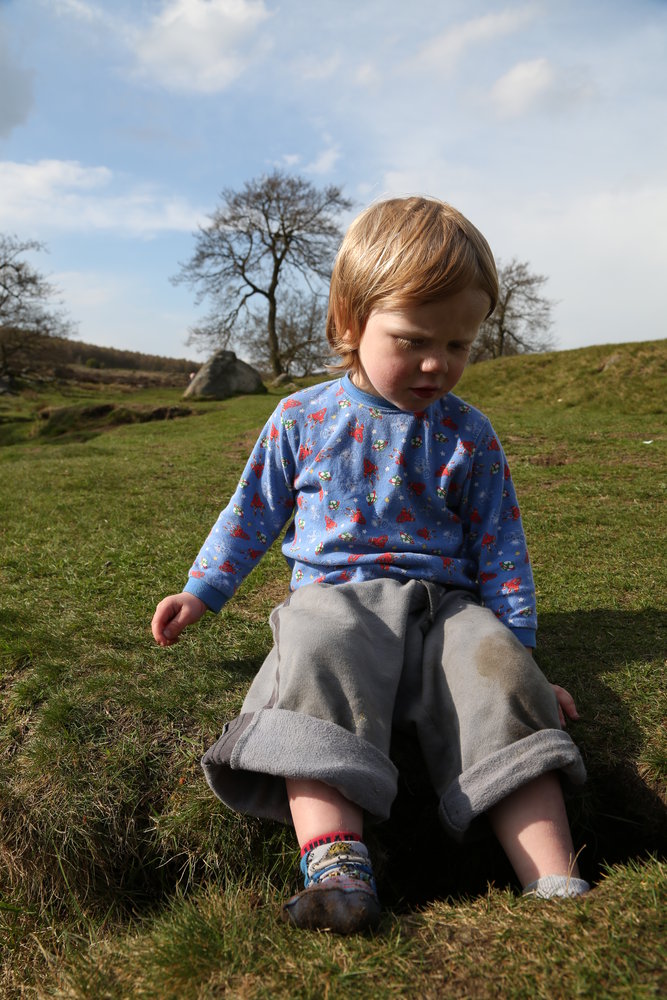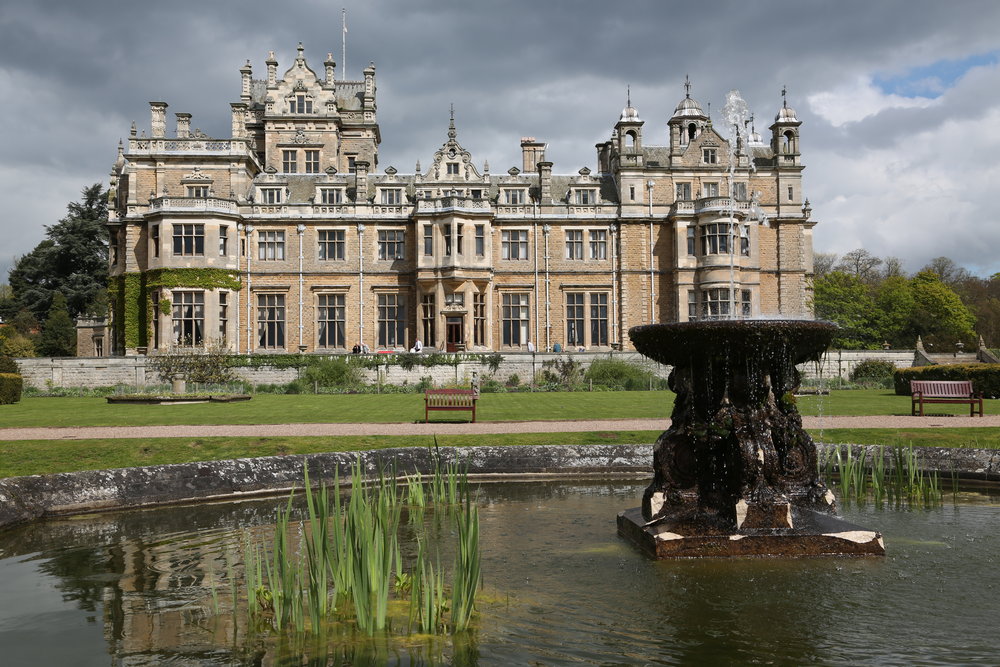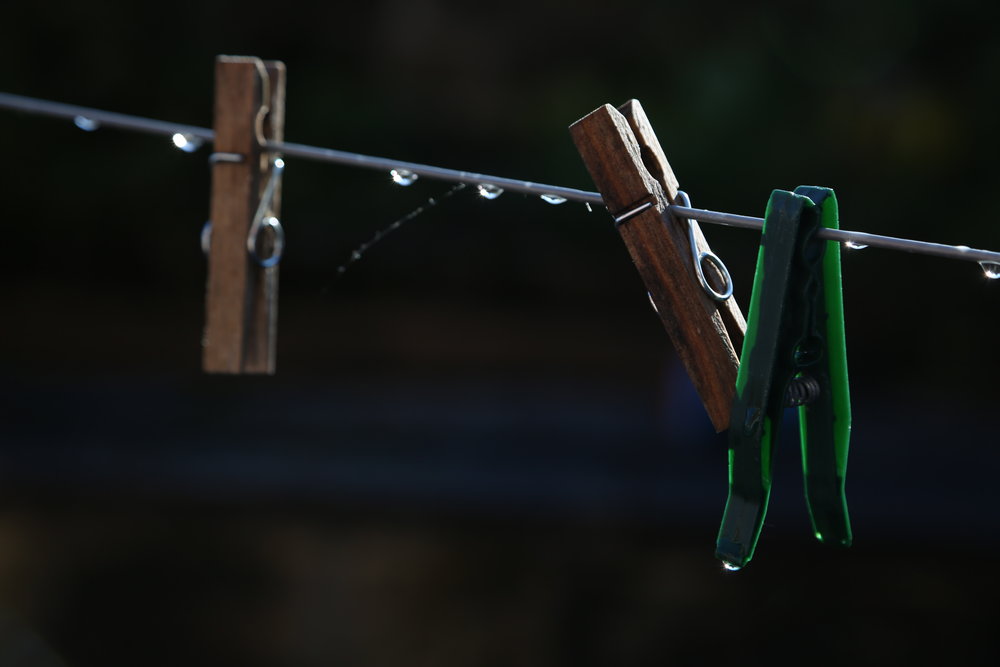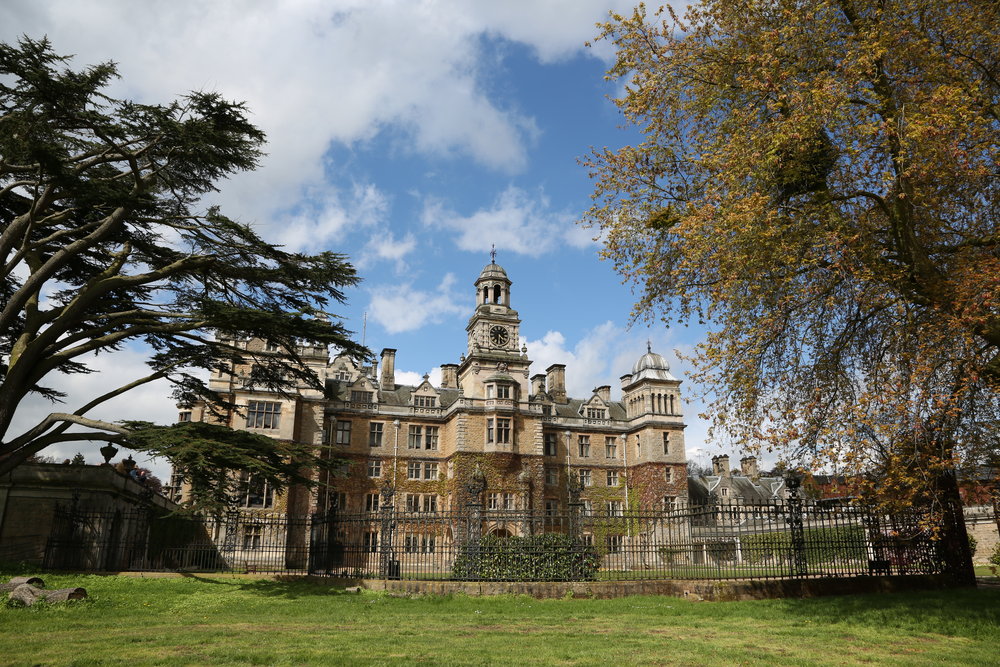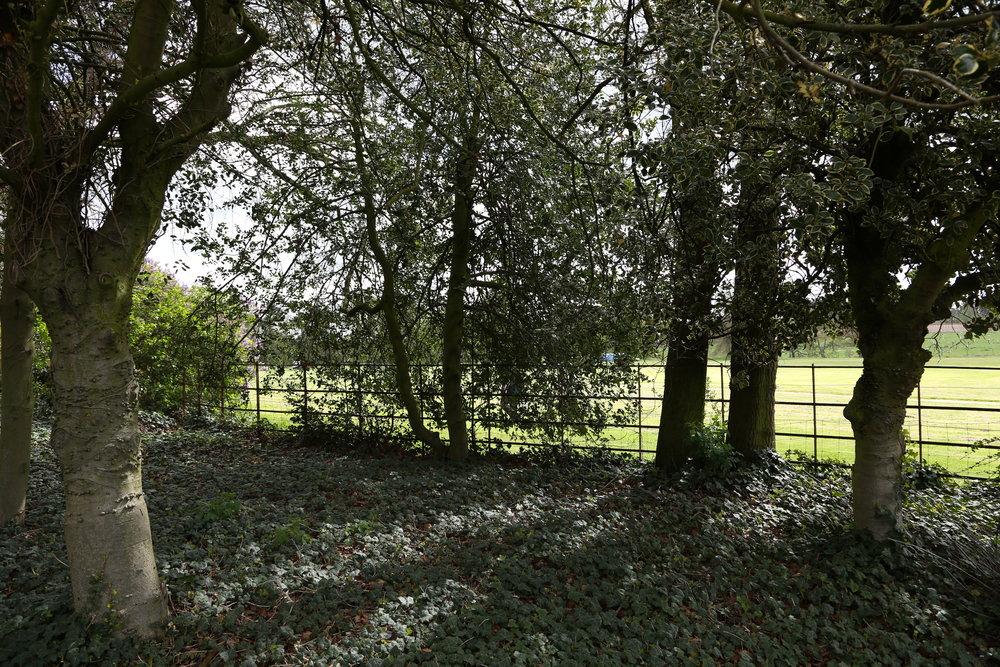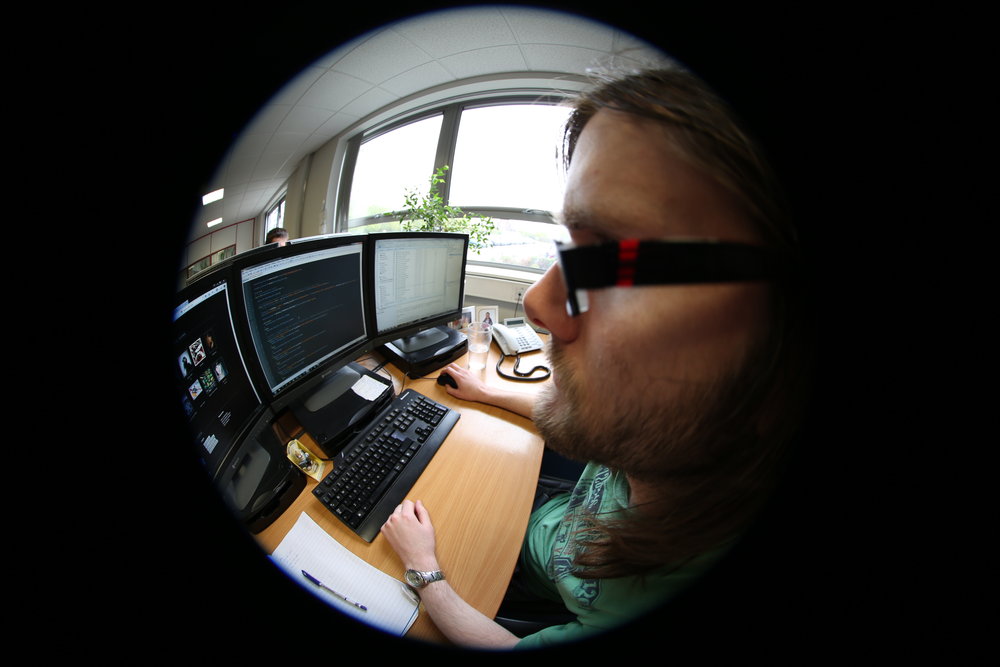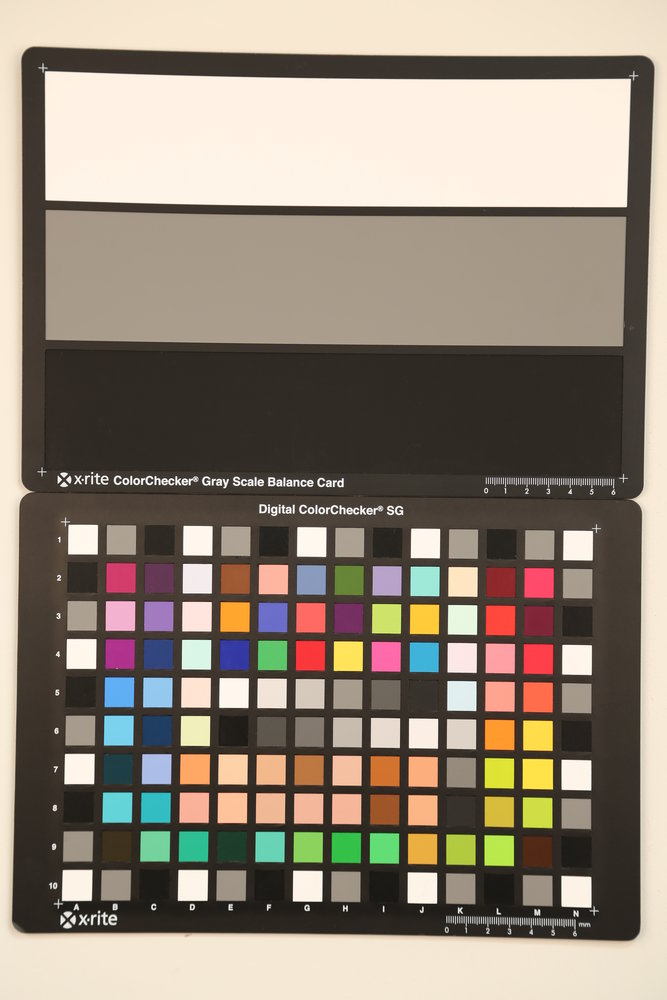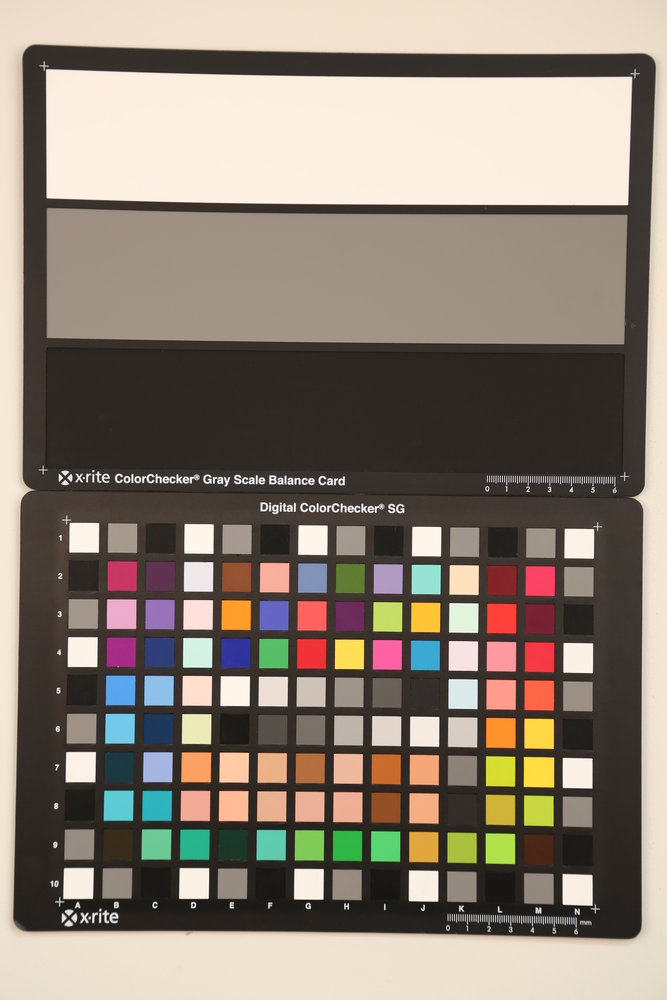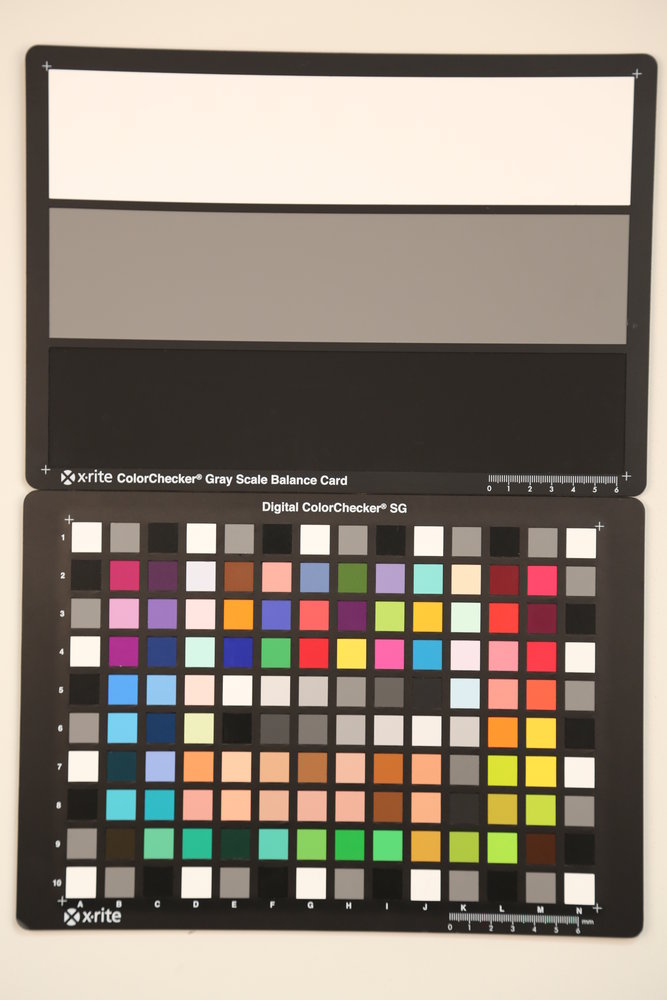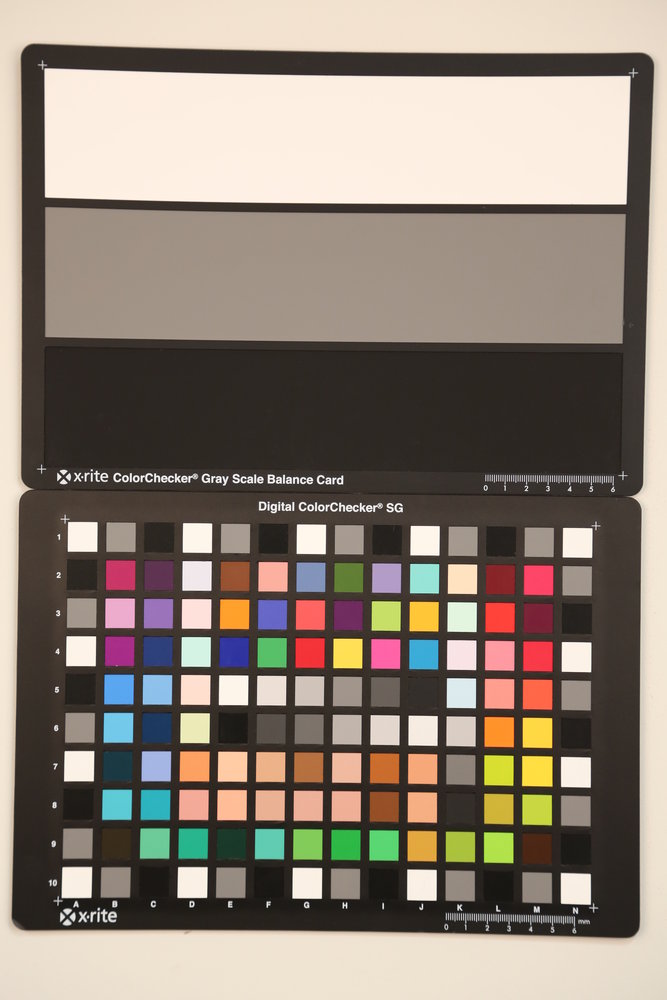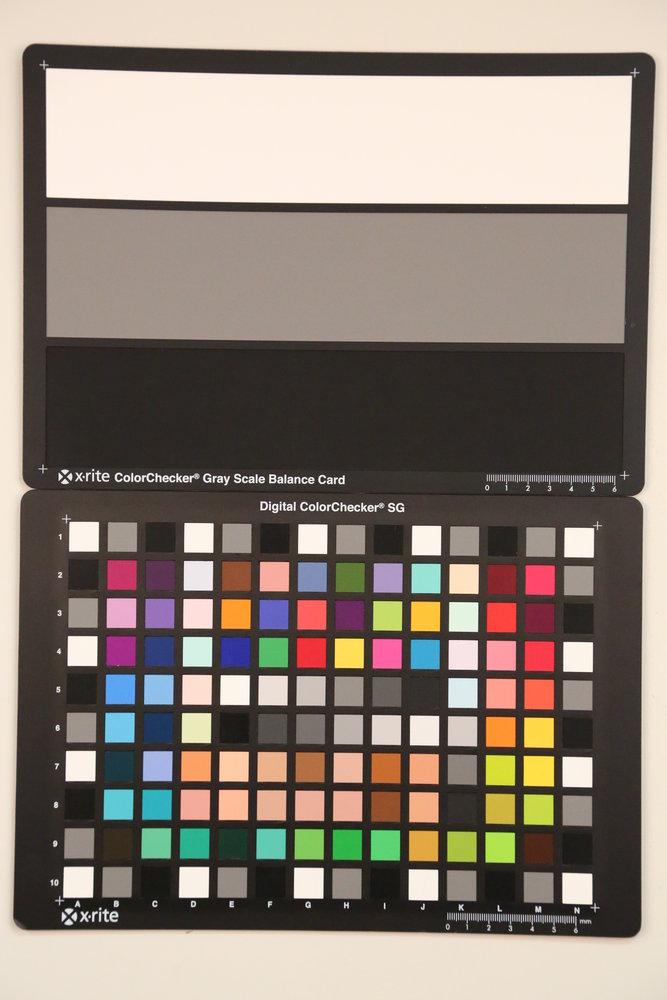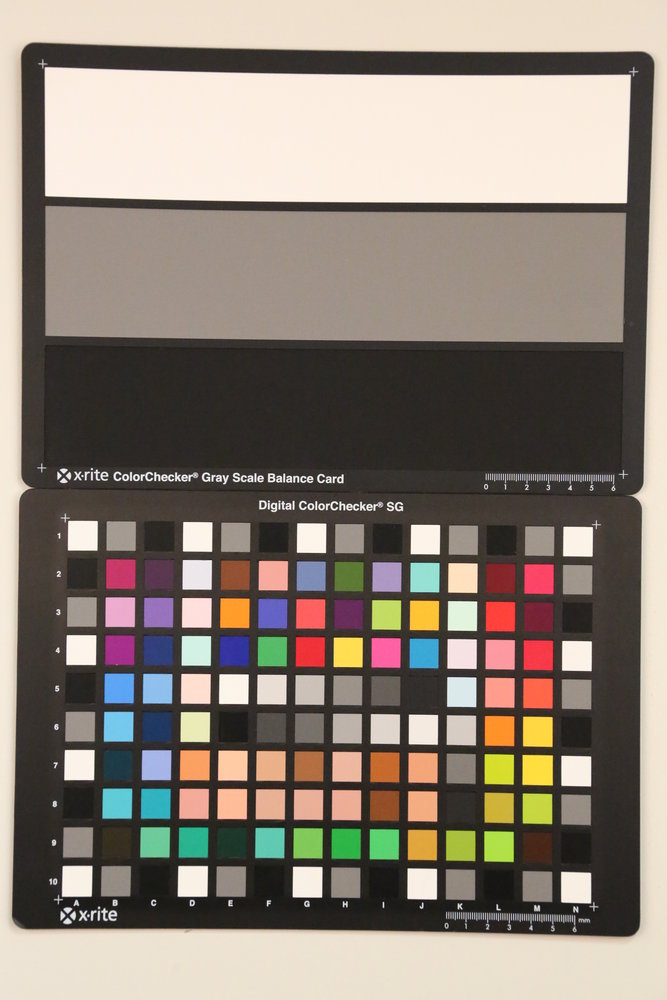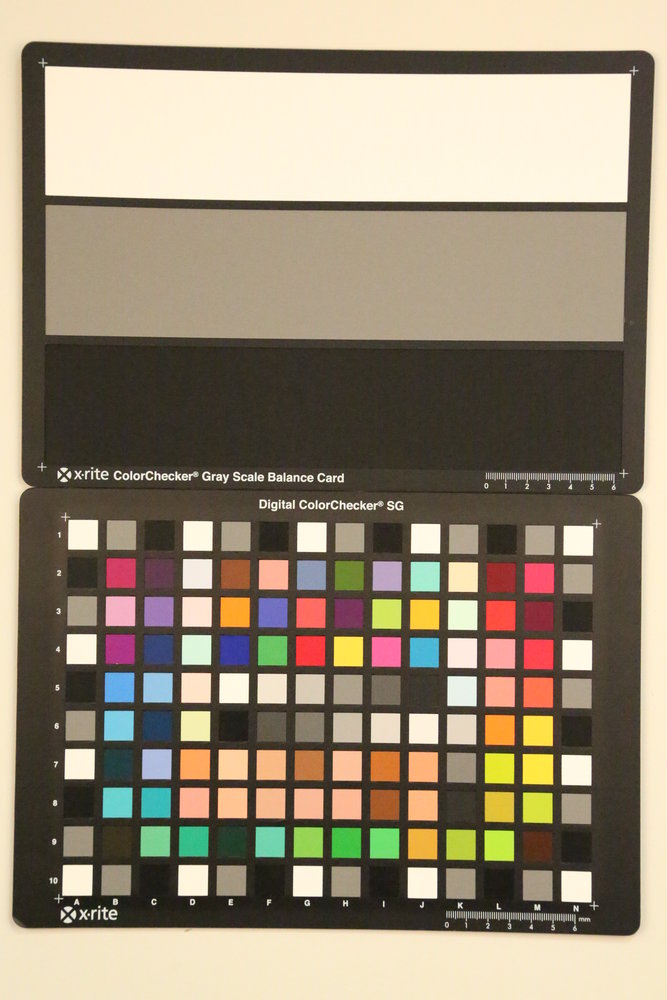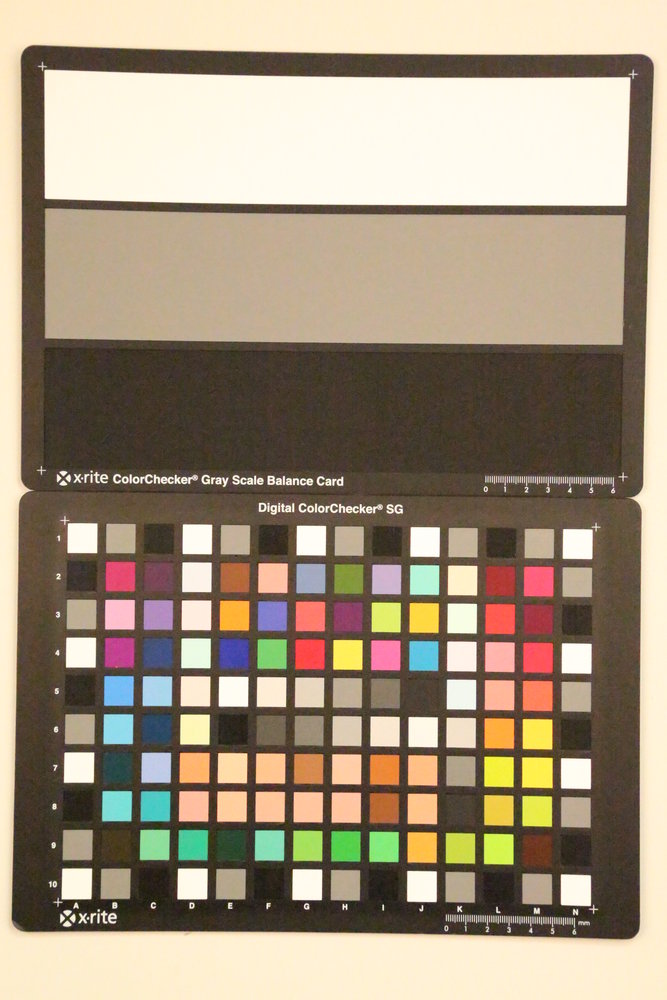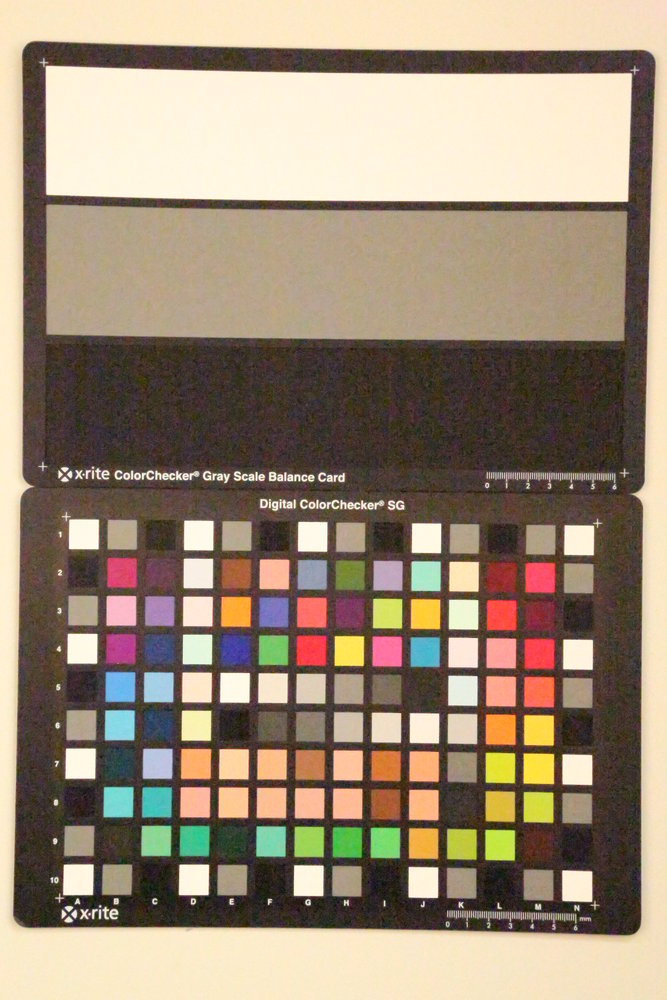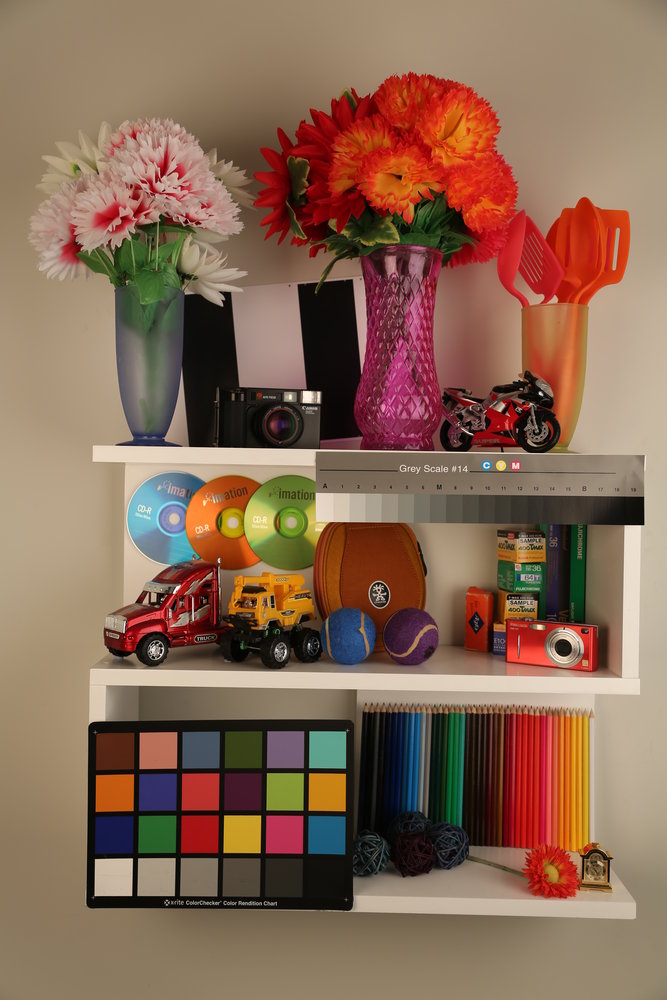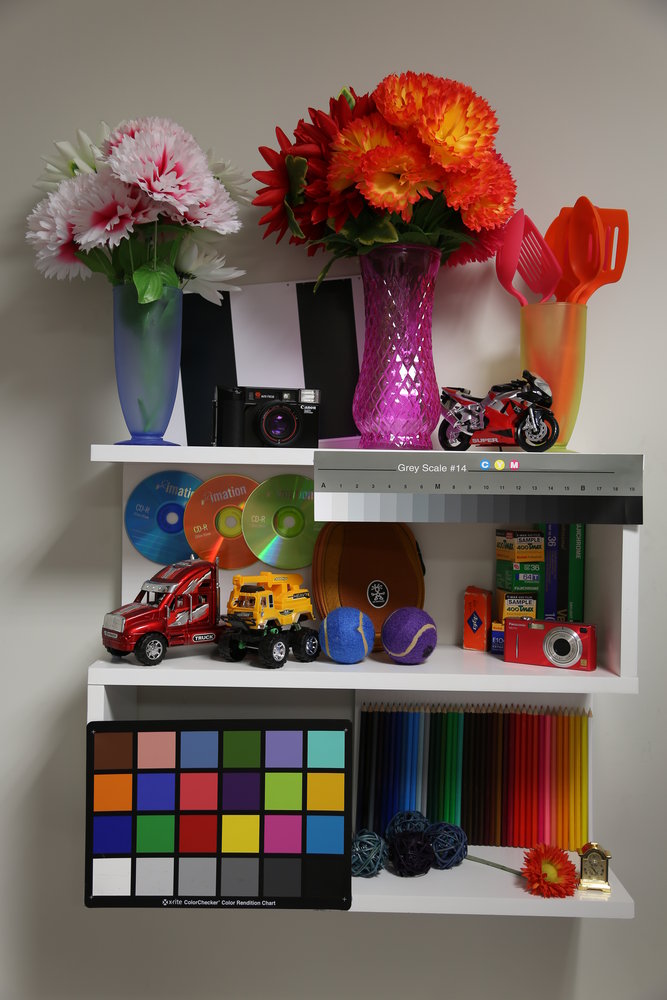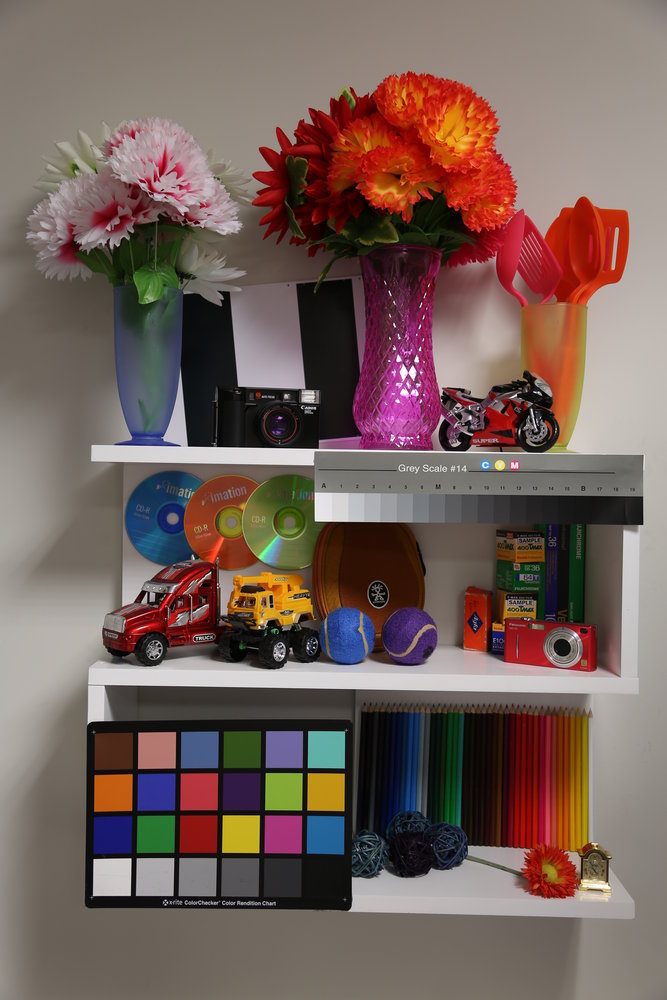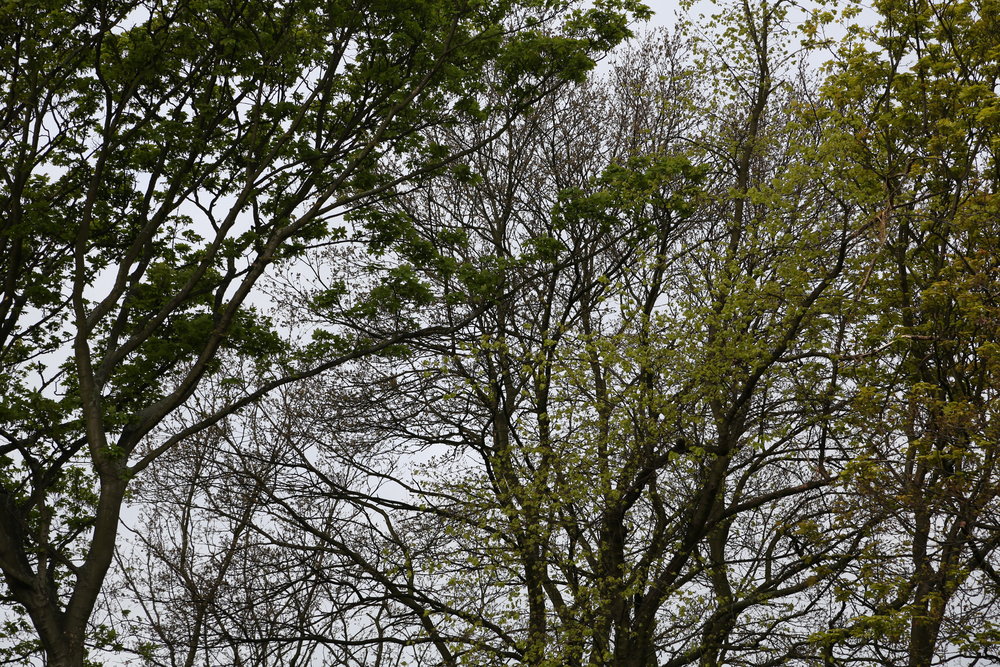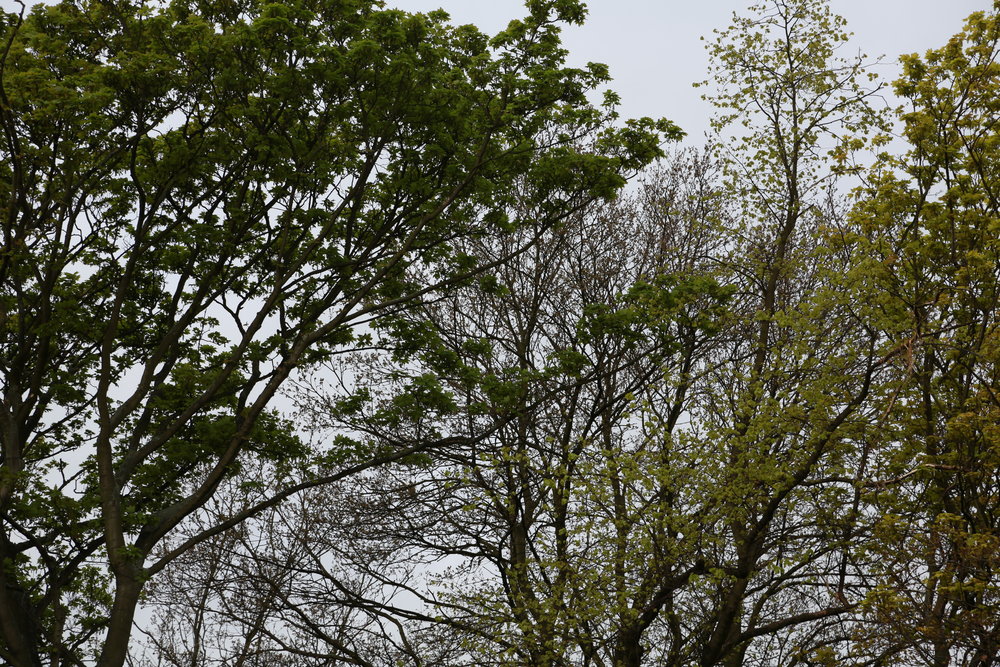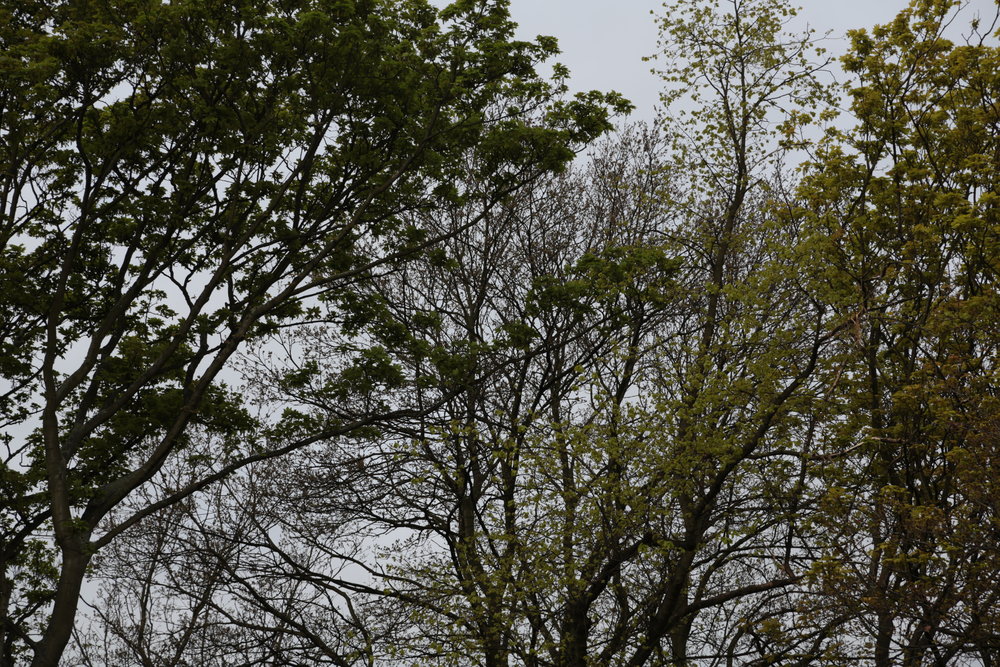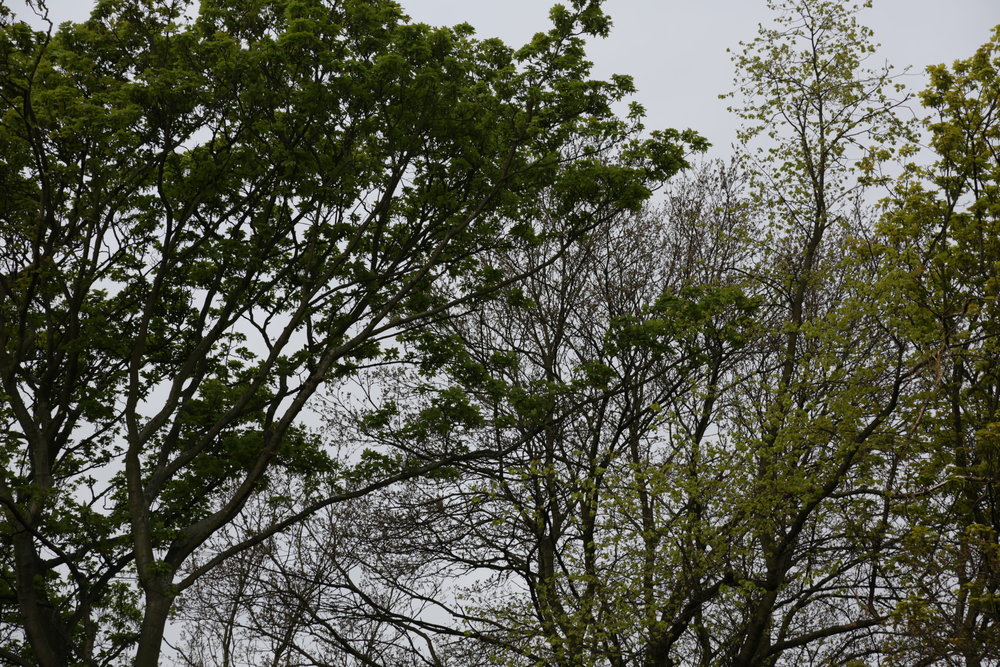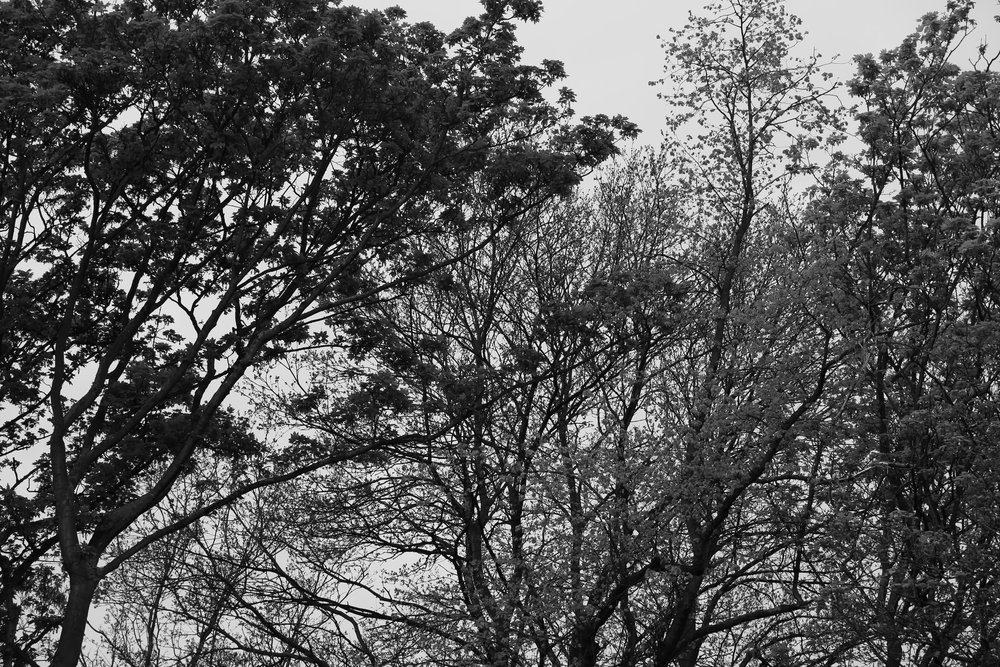Features
Handling
Performance
Verdict
Specification
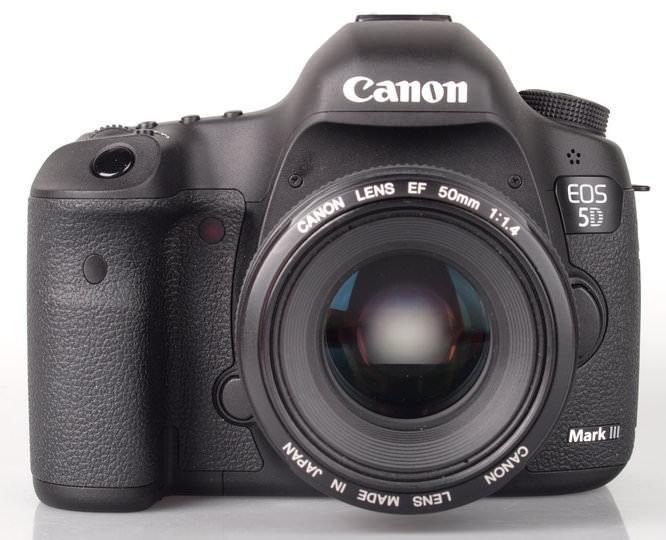
The Canon EOS 5D Mark III is the long awaited update to the Canon EOS 5D Mark II, 4 years in the making, it is more of an evolutionary update, rather than a revolutionary update like the Mark II was to the Mark I, but does the Mark III have enough updates and upgrades to make it worth the investment? Find out in our full review...
Canon EOS 5D Mark III Features
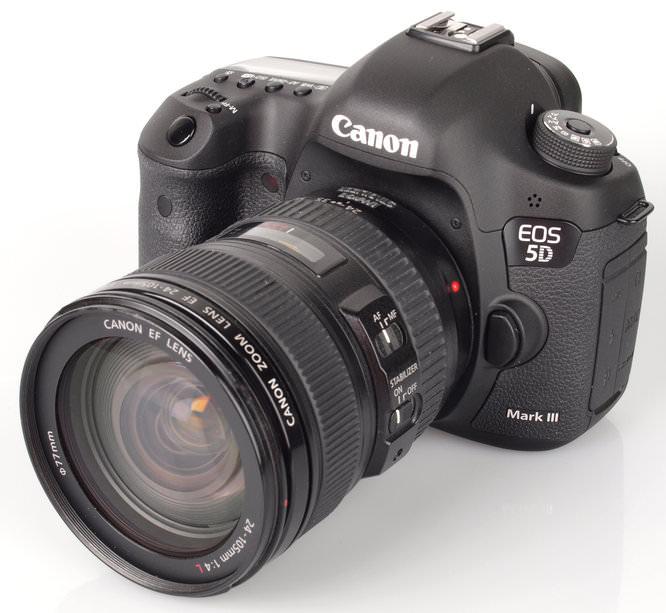
Canon EOS 5D MarkIII 24-105mm L Lens
The Canon EOS Mark II took the film and video world by storm by providing Full HD video recording in a Digital SLR body, this combined with access to Canon's vast range of EOS lenses made it an extremely popular choice for video. Many love the Mark II for it's full frame sensor and high image quality, although perhaps not so much for it's slow auto focus in low light conditions.
The new Mark III adds a new sensor, a larger screen, quicker continuous shooting, SD card slot as well as Compact Flash, additional video options, expanded ISO range (50 - 102400), improved battery life, improved viewfinder (100% vs 98%), 61-point AF (vs 9-point), as well as a new price with an RRP of £2999.
The new camera also sees a subtle but noticeable redesign of the layout of controls and buttons on the front, back and top of the camera. There are additional buttons on the top and back, and a re-positioned on/off button which has been moved from the back to the top.
Key Features
- New 22.3 megapixel full frame sensor
- 3.2-inch 1,040,000-dot screen
- 61 Point / 41 f/4 cross-type AF points inc 5 dual cross type at f/2.8, -2 EV
- Up to 6fps continuous shooting
- Native ISO 100-25,600 sensitivity, expands to ISO 50 to 102,400
- 100% coverage Pentaprism viewfinder, 0.71x magnification
- CompactFlash / SD/SDHC/SDXC Card slots
- Full HD video with manual control
- Lens aberration correction
- 14-bit DIGIC 5+ processor
- Enhanced Weather sealing
- HDR mode with presets
- Microphone / Headphone sockets
- Magnesium body
Canon EOS 5D Mark III Handling
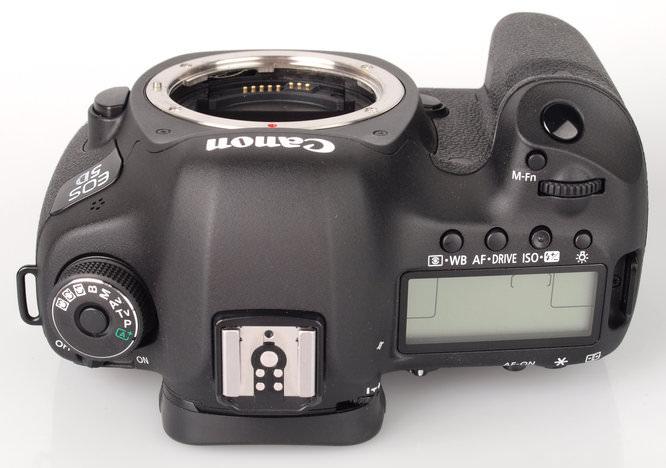
Canon EOS 5D MarkIII Top
Handling - The camera feels very well built with a solid construction and good handling, the ergonomics of the camera are good with a reassuring grip at the front and back with ample room for your hand. The balance feels very good with a lens such as the 24-105mm used in testing the camera. The optical viewfinder is large and bright giving you a very good view of the subject. A large number of the buttons on the camera can be customised, including the three rear buttons (AF-on, AE Lock, AF point), middle set button, multi-controller joypad, the top M-fn button, as well as the depth of field preview button. The zoom button has been moved compared to the Mark II, and when compared to other Canon Digital SLRs, such as the 600D, 60D, 7D etc.

Canon EOS 5D MarkIII Rear
Menus – Each section in the menus is colour coded so that you can quickly find the settings you want to change and there are a large number of settings and options, which may mean it's a good idea to spend some time reading the manual. To quickly get access to options, you simply press the Q button, and a control panel is shown on the rear screen. You can set the auto ISO mode so that you control the ISO range available as well as the slowest shutter speed used by the camera before it boosts the ISO setting. It works well and can give you additional confidence that a fast enough shutter speed will be used. Another very useful feature for anyone shooting a lot of images is the ability to rate your images on a scale of one to five on screen.
The Canon EOS 5D Mark III features auto focus (AF) scenarios built into the camera so that you can choose the most appropriate for your shooting situation. The choices optimise the following three options: Tracking sensitivity, Acceleration / Deceleration Tracking, AF point auto switching - each can be increased or decreased +/-2. The menus have built in help that can be accessed by pressing the INFO button.
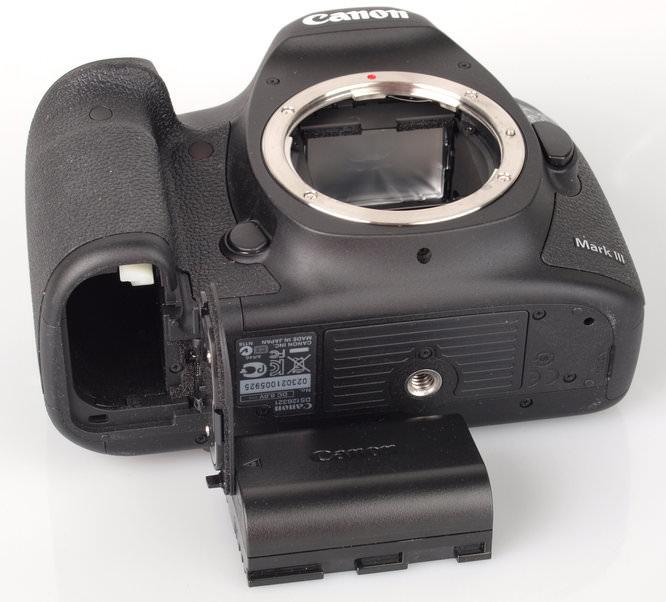
Canon EOS 5D MarkIII Battery
Battery life - CIPA life is rated at: 950 shots. We were able to take over 930 shots before the battery went flat.
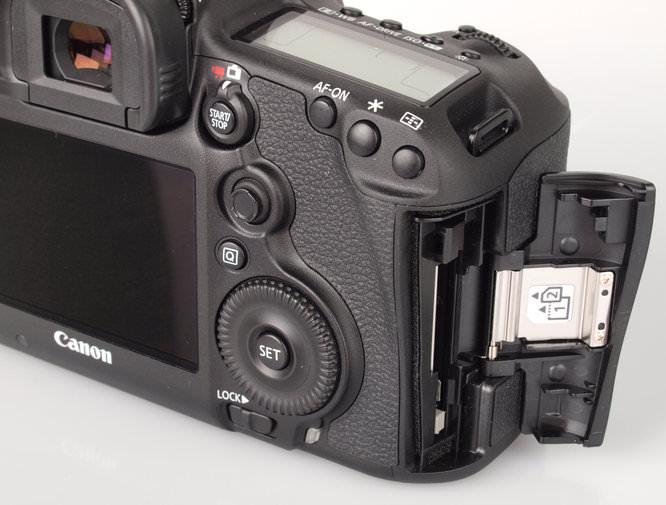
Canon EOS 5D MarkIII Memory Slots
Speed - We tested each camera's performance at focusing, shutter response, shot-to-shot time, continuous shooting etc. and have posted the results below. To test this we took 6 or more shots and calculated the average, so that consistent results were produced.
| Canon EOS 5D Mark III | |
| Shutter Response | 0.05 |
| Wide - Focus / Shutter Response | 0.15 |
| Full zoom - Focus / Shutter Response | 0.15 |
| Switch on Time to Taking a Photo | 0.5 |
| Shot to Shot (without flash) | 0.6 |
| Shot to Shot with Flash | N/A |
| Continuous Shooting (JPEG) | 6fps (19 before slowdown*) |
| Continuous Shooting (with Flash) | N/A |
| Continuous Shooting (RAW) | 6fps (11 before slowdown*) |
* Tested with a Class 10 SDHC card.
Focus speed is very good at wide and telephoto using the Canon 24-105mm f/4 lens, although when using the live view mode focus is noticeably slower. To get the best write speeds a high speed UDMA 7 CompactFlash card is recommended as RAW files are between 22 and 45mb, with JPEGs between roughly 3 and 11Mb.
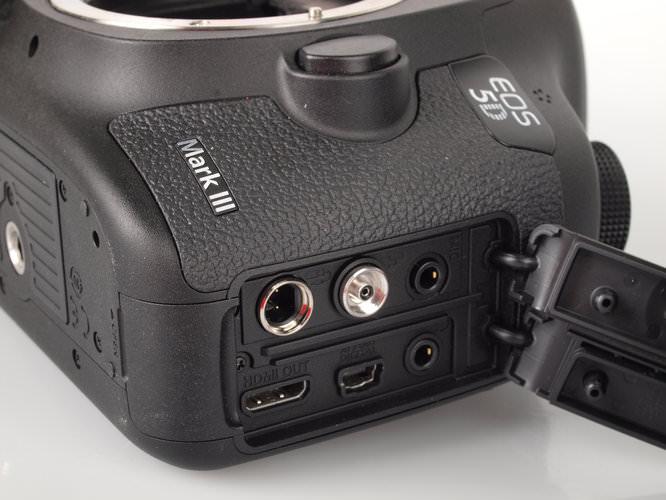
Canon EOS 5D Mark III Ports
Canon EOS 5D Mark III Performance
Additional sample photos and product shots are available in the Equipment Database, where you can add your own photos, review and product ratings. Additional sample photos from the Canon EOS 5D Mark III can be found in our Canon 8-15mm f/4L Fisheye Zoom Lens Review.
Canon EOS 5D Mark III Sample Photos
Sample Photos - Colour reproduction is excellent with extremely pleasing flesh tones and saturated colours. Detail is very good with the camera capable of resolving fine details in textures. Shots in a variety of lighting conditions show very good dynamic range.
Canon EOS 5D Mark III Lens test images
Lens test images - Dynamic range appears to be very good with excellent exposure helping here. Centre and edge quality appears very good with the 24-105mm f/4 L lens. Flare was not a problem with no noticeable signs of distortion. Focusing was good with the camera producing sharp images, although sharpness could be increased by altering the cameras settings.
Canon EOS 5D Mark III ISO test images
ISO Noise Performance - Noise performance is excellent until you hit ISO3200 where you can start to see chroma noise appear in dark colours. At ISO6400 you start to see the grain effect of noise in certain darker colours as well as the slight loss of detail. At ISO12800 noise increases and detail is lost again, although overall colour is good and noise is lower on the Canon, than on the Nikon D800 and D4. It's at ISO25600 that colour saturation drops as noise becomes much more dominant and at this ISO setting it may be best to resize the image, convert to black and white or apply additional noise processing. ISO51200 is best avoided unless absolutely necessary. The highest ISO setting should be avoided entirely.
Canon EOS 5D Mark III White-balance test images
White Balance Performance - Auto White Balance performs well under fluorescent lighting, with the fluorescent preset giving similar results to the auto setting. Results under tungsten lighting give warm results whether using auto white balance or the tungsten preset and for more accurate colours custom white balance is recommended.
Canon EOS 5D Mark III Digital filters
Built in HDR creation - This has a variety of options: Auto / 1, 2, 3 EV, Auto-align images, Effect: Natural, Art standard, Art vivid, Art bold, Art embossed. The camera takes three photos and automatically combines the images to create the HDR image. There is an option to keep the original images or just the HDR creation. If you don't want to use HDR, then you can also use Lighting Optimiser to expand dynamic range in images.
Colour modes: Auto, Standard, Portrait, Landscape, Neutral, Faithful, Monochrome, as well as 3 user defined picture styles whereby you can adjust the sharpness (0 to +7), contrast, saturation and colour tone (each can be set from -4 to +4). For monochrome images you can select the filter (none, yellow, orange, red, green) and toning effect (none, sepia, blue, purple, green).
Video - Options include 30/25/24fps at full resolution (1080p), with 60/50fps available at 720p. IPB - compresses multiple frames, or ALL-I - compresses one frame at a time. Maximum record time is 29minutes 59 seconds. Microphone level is adjustable, there is also a wind filter option for the built in mono microphone. You can use the rear scroll wheel as a d-pad while recording if you enable silent operation. The camera supports time code settings as well as automatic time code correction called drop frame.
For low light video recording, the Canon allows the use of ISO25600, an example of this can be viewed on the ePHOTOzine YouTube channel, with performance, image quality and the lack of noise being very impressive.
Value For Money
The Canon EOS 5D Mark III is available for £2999 body only, and at this price point, competitors include the full frame 36.6 megapixel Nikon D800 available for around £400 less than the Mark III. Another camera that could be considered is perhaps the 15/46 megapixel Foveon sensor Sigma SD1, although this doesn't feature video. The Sony Alpha A77 is the current top of the range Digital SLR from Sony and features a 24.3 megapixel sensor, full HD video and is available from around £1089. You'll also need to buy a memory card and a case or bag to keep your camera safe and protected - have a look at our complete guide to camera bags.
Canon EOS 5D Mark III Verdict
The Canon EOS 5D Mark III is an excellent camera, capable of taking stunning photos in a wide variety of situations and has a wealth of lenses available to go with it. The 5D Mark III may not be as ground-breaking as the 5D Mark II, but this is simply because the Mark II was so good, and where the Mark III has been improved is noticeable. It has a number of very welcome (and some would say needed) updates, importantly to focus points, speed, continuous shooting, HDR, improved processing, ISO performance and an extended range, as well as a high resolution 3.2inch screen.
The 5D Mark III would make an excellent choice for anyone with an investment in Canon lenses and equipment, as well as those upgrading from the Mark II, although the new higher recommended retail price may make it more of a stretch financially. The 22.3 megapixel sensor has excellent noise performance, excellent colours and very good detail and does not necessarily demand premium priced lenses for excellent performance (unlike higher resolution competitors), although certainly benefits from it. A number of improvements have been made for videographers with the microphone and headphone sockets being welcome additions, as well as the other advanced options available in the camera.
Canon EOS 5D Mark III Digital SLR Review: The Canon EOS 5D Mark III is an excellent Digital SLR capable of excellent image quality and fast performance.
